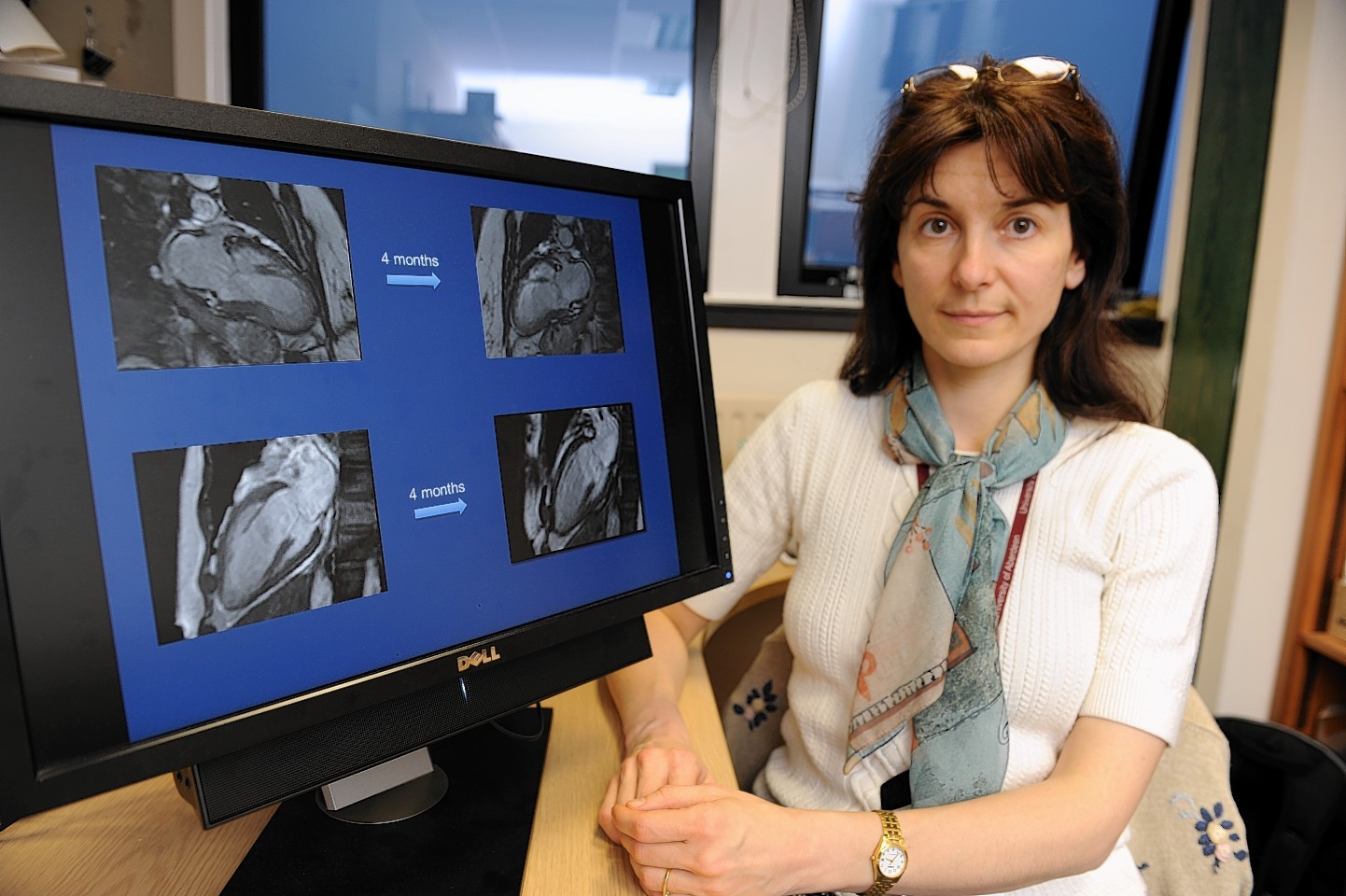We all know that time is meant to heal a broken heart.
But researchers at Aberdeen University have discovered that even time will not cure the condition known as stress induced (Tako-tsubo) cardiomyopathy.
The findings could have significant impact on the treatment of sufferers of the so-called “broke heart syndrome”, such as Michael Strachan, of Banchory.
He thought he was having a heart attack in August this year when he began getting pains down his chest.
The 50-year-old was juggling his job with caring for his wife Sheila, who suffered a serious stroke two years ago.
After receiving a message about a change to her care arrangements, he began being “terribly sick.”
Mr Strachan recalled: “I had a meeting with Sheila’s care manager, but when I got there I was sick again. She took one look at the colour of my face and told me to jump in her car and she’d take me down to the local doctors’ surgery.
“I remember going into the waiting room, but that’s the last thing I remember until I woke up in the back of an ambulance on my way to Aberdeen Royal Infirmary.”
Hospital tests showed Mr Strachan had Tako-tsubo. Four months on, he is still signed off work but starting to bounce back.
Mr Strachan’s progress has been monitored by academics and clinicians from Aberdeen University, led by Dr Dana Dawson.
The condition often manifests itself as a heart attack and is brought on by a major stress, such as a death or accident.
However, after four years of research, Dr Dawson – a senior lecturer in cardiovascular medicine at Aberdeen University and consultant cardiologist at ARI – has discovered recovery does not happen as rapidly as previously thought.
She said her research raised questions about future treatment of the condition.
“The use of more sophisticated diagnostic tools such as Cardiac Magnetic Resonance and Spectroscopy found continued abnormalities in the heart,” she said.
“Our findings go some way to providing an explanation as to why patients continue to complain about not feeling right months later despite no apparent problems with their heart.
“We now intend to call them back to see whether these things ever normalise. If they don’t recover fully then it opens up new questions as to whether acute stress induced cardiomyopathy caused this, or whether there was something underlying beforehand that made them susceptible to this kind of episode.”
